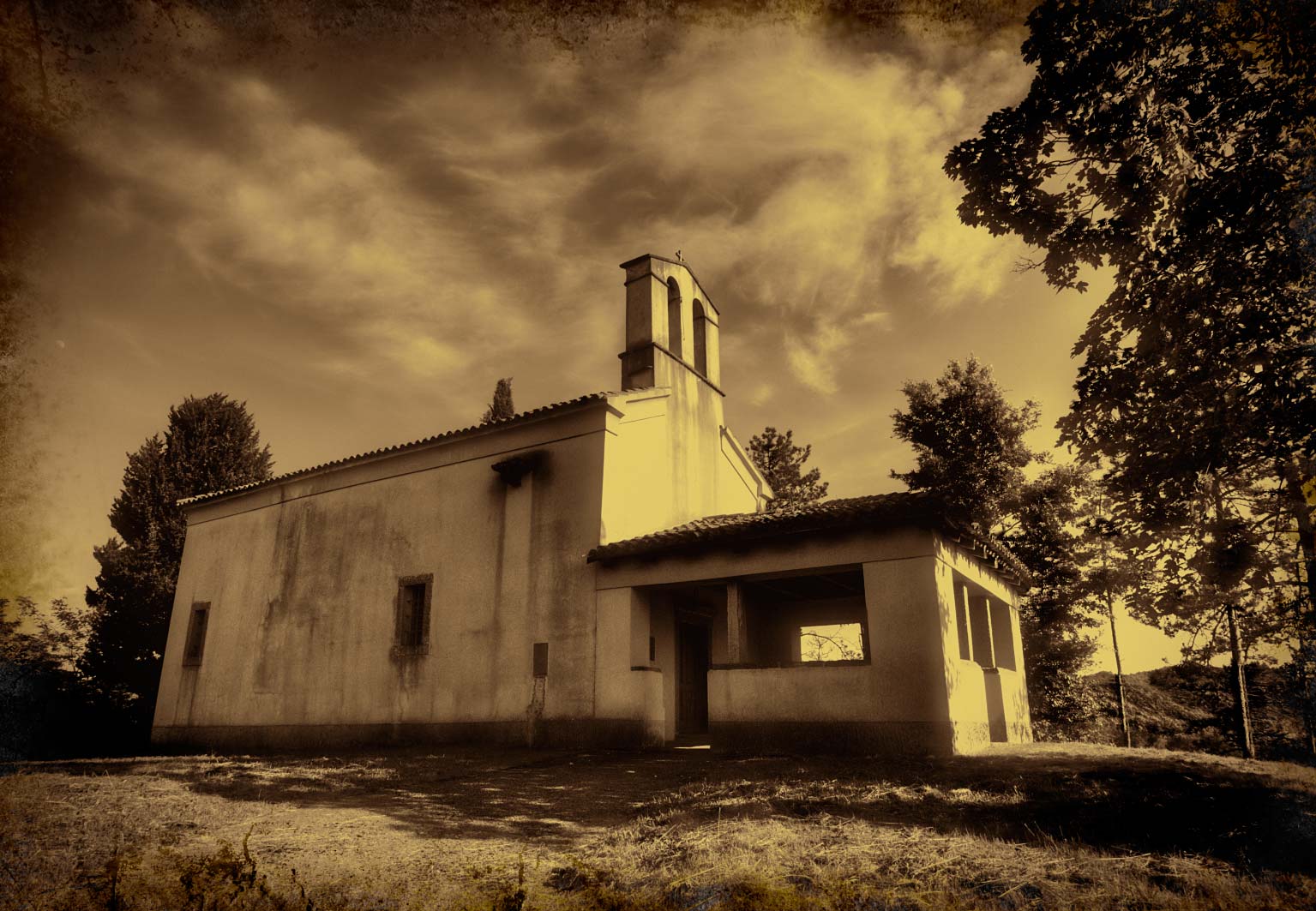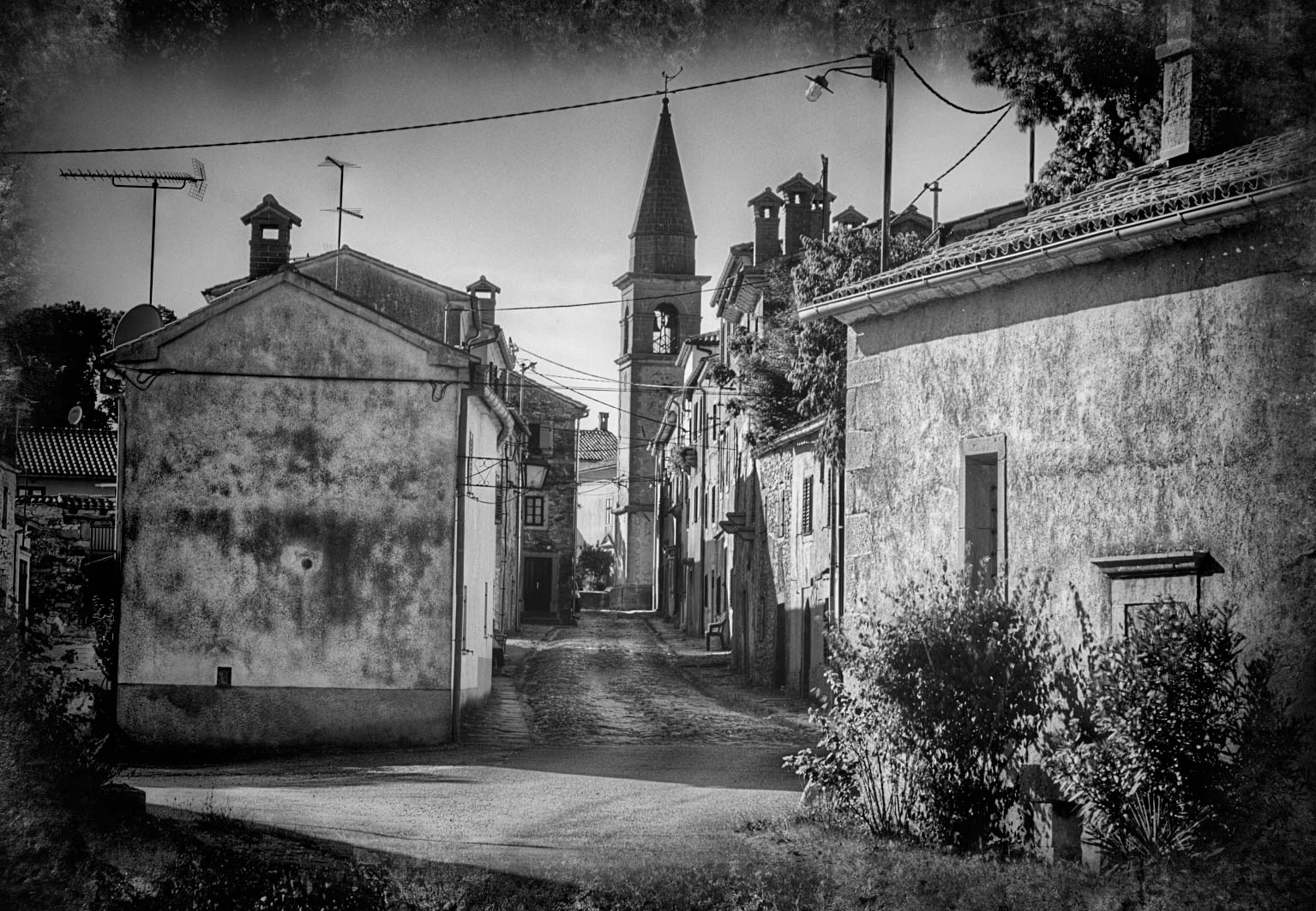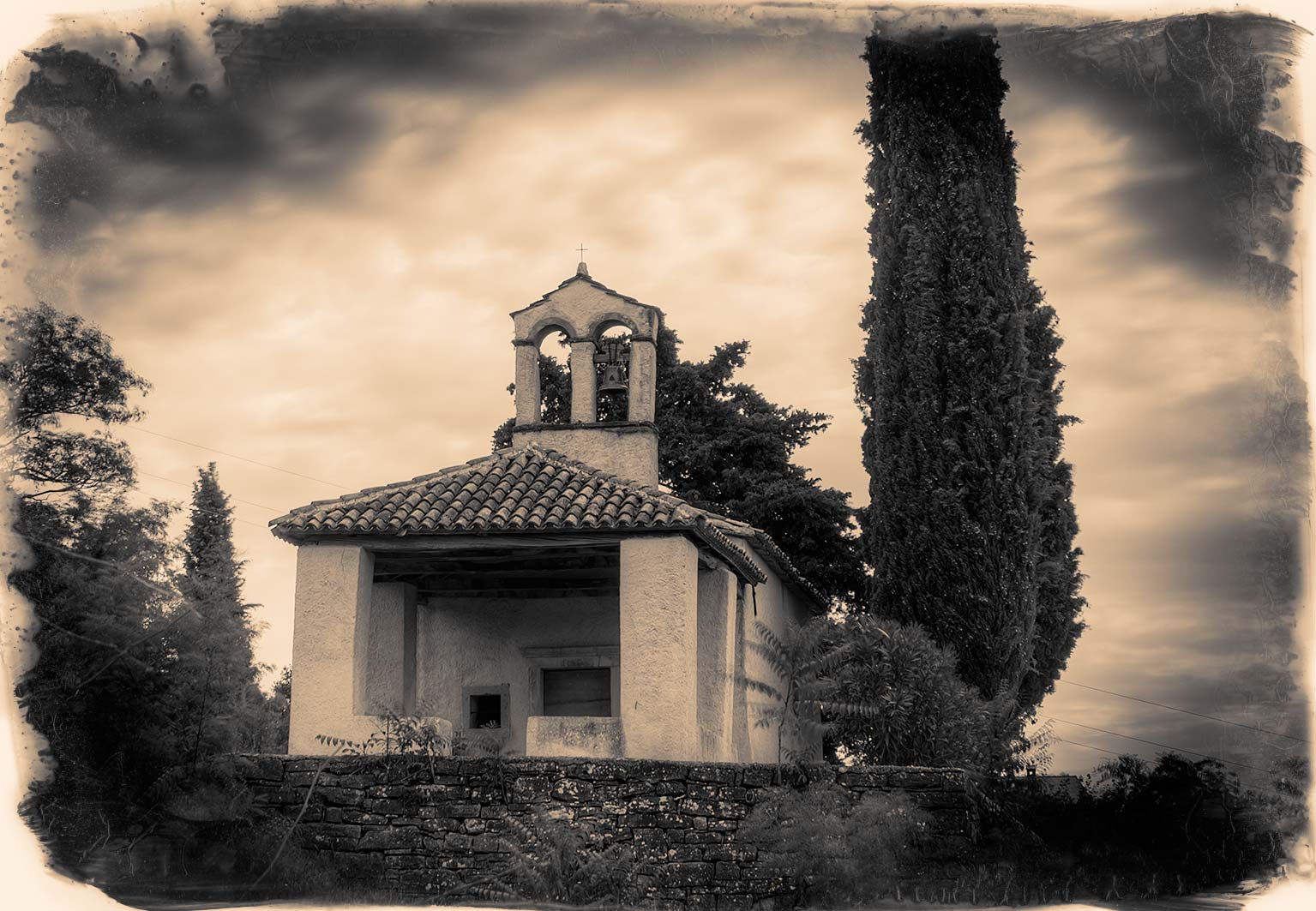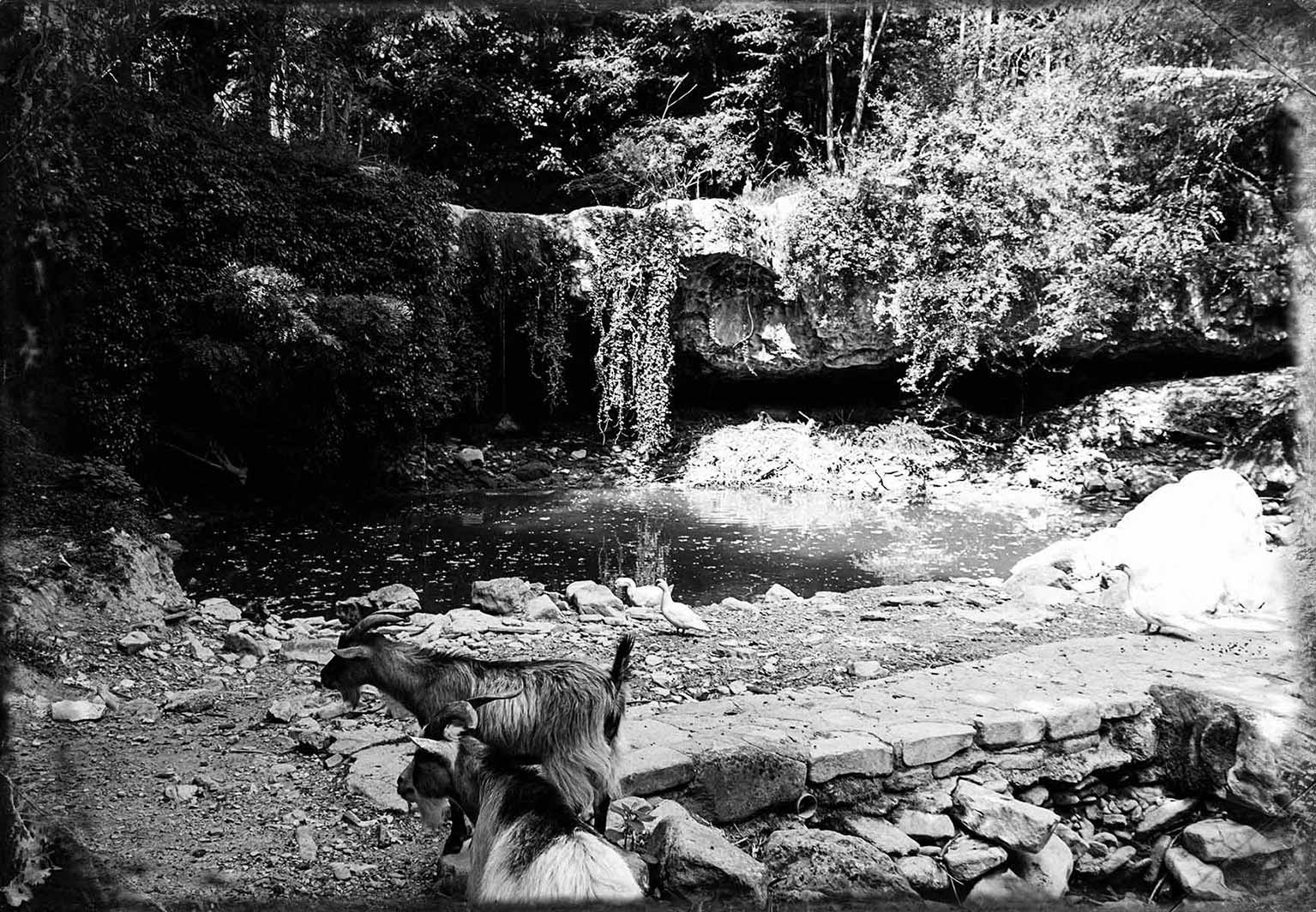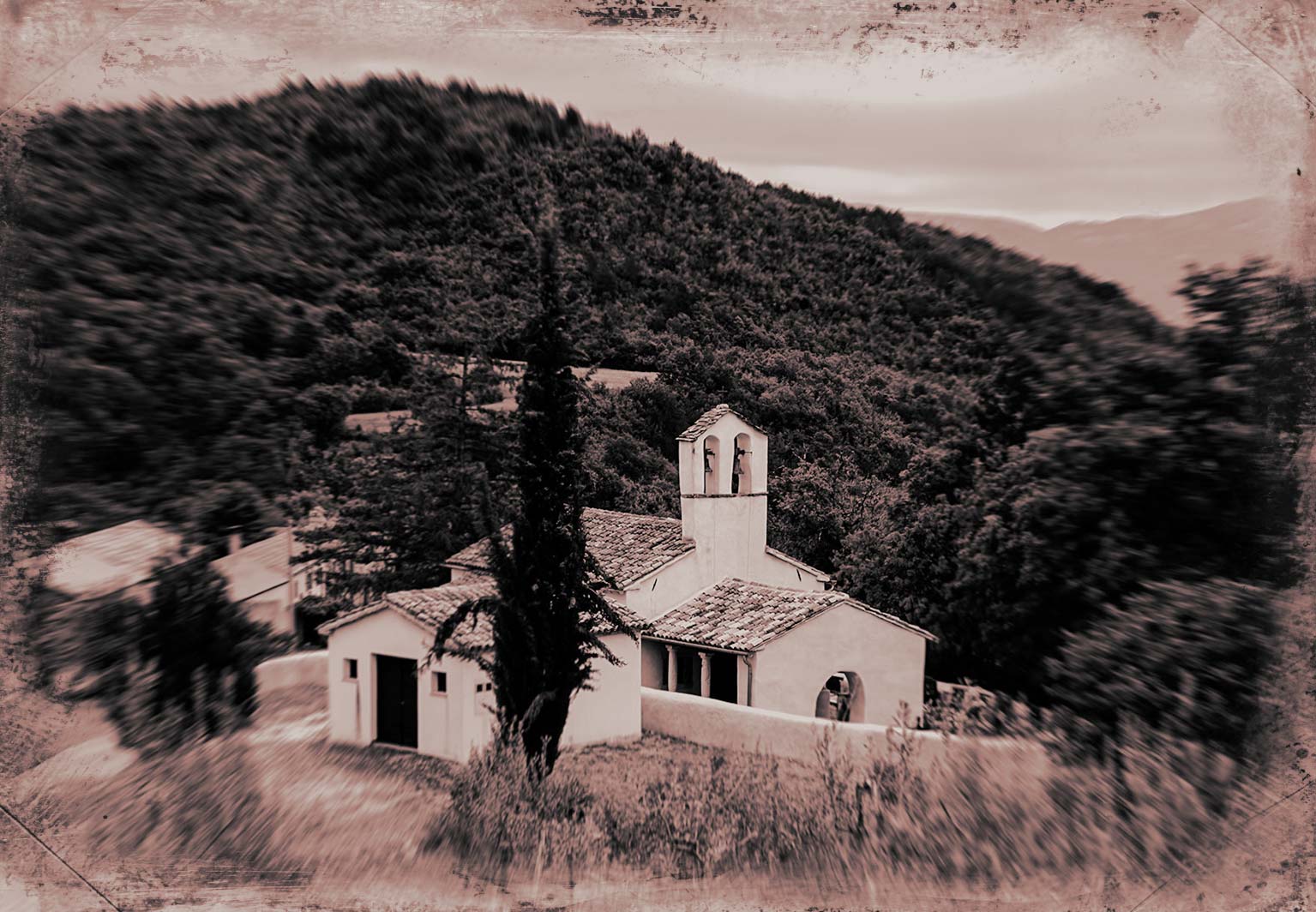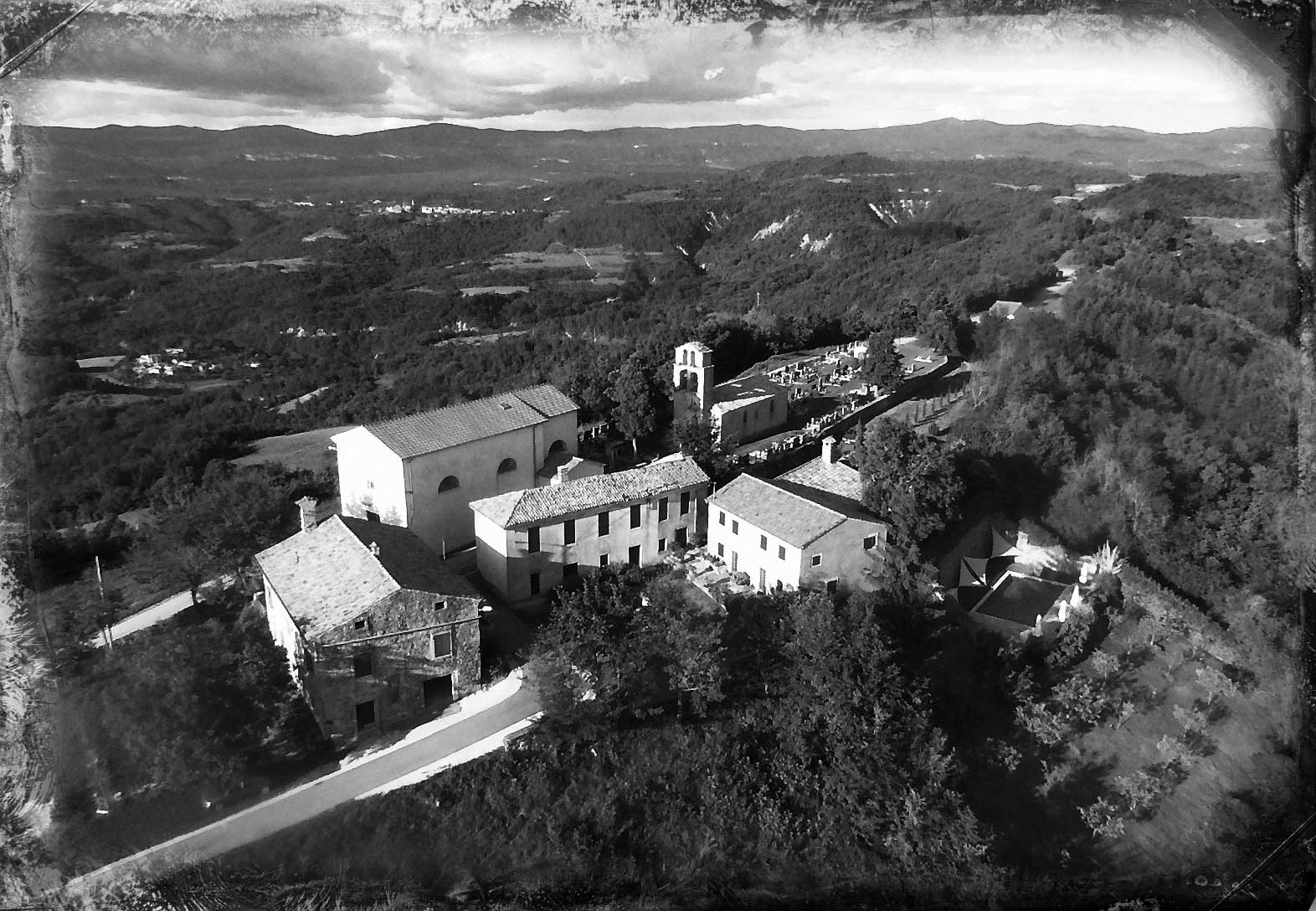Paz
 Just like an eagle's nest, having a good view of the surrounding area, Paz is located on a high hill above the Field of Boljun. As many others in Istria, the castle was build out of strategic reasons. It was mentioned for the first time in the 12th century as Pas, Pass, later Pasperc and Pasberg, as part of the property of Boljun. Since 1374, it was under the rule of the Counts of Pazin, and at the end of 15th century, the vassals of the Habsburgs, the Walderstein family, ruled it. At the beginning of the 16th century, the Barbo family has taken over the castle.They marked this area in later centuries.
Just like an eagle's nest, having a good view of the surrounding area, Paz is located on a high hill above the Field of Boljun. As many others in Istria, the castle was build out of strategic reasons. It was mentioned for the first time in the 12th century as Pas, Pass, later Pasperc and Pasberg, as part of the property of Boljun. Since 1374, it was under the rule of the Counts of Pazin, and at the end of 15th century, the vassals of the Habsburgs, the Walderstein family, ruled it. At the beginning of the 16th century, the Barbo family has taken over the castle.They marked this area in later centuries.
In 1529, near Paz, Juraj Barbo built the tower Posrt. Mesaldo Barbo renovated the castle in Paz in 1570, and after the demolition of the tower of Posrt in the War of Uskoks (1615-1618), Daniele Barbo built a new country castle Belaj.
Ivan Bernardin Barbo, the brother of the cardinal Mark, an Aquileian patriarch, and the cousin of the Pope Paul the Second, is the founder of their line in Istria. From Venice, he came to Motovun, and in 1480, after he married Katarina, the daughter of Martin Mojzević Kožljački, he moved to Paz.
Castle Paz
 The Lord of Paz, Mesaldo Barbo, who was a keen supporter of reformation, killed his son Kastelan in 1574, in Vrhnica. He was convicted, jailed an executed in 1589, in the main square in Ljubljana. The local people have once said that it is since than that this prominent family started to decline and their castle in Paz started to demolish on its own, wrote Vladimir Nazor, a famous Croatian writer from the 20th century. Because of this family's tragedy he was encouraged to write a book called A Monstrum from Paz.
The Lord of Paz, Mesaldo Barbo, who was a keen supporter of reformation, killed his son Kastelan in 1574, in Vrhnica. He was convicted, jailed an executed in 1589, in the main square in Ljubljana. The local people have once said that it is since than that this prominent family started to decline and their castle in Paz started to demolish on its own, wrote Vladimir Nazor, a famous Croatian writer from the 20th century. Because of this family's tragedy he was encouraged to write a book called A Monstrum from Paz.
Mesaldo was a passionate hunter, and although he owned a palace in Trieste, he prefered to stay in Paz so he could go hunting in this area that had plenty of game animals. Three sons inherited Mesaldo. Amongst the three, Bernardin was the most prominent one. When the last of the Istrian Bembos', count Francisco Carl sold his property to duke Auersperg and moved to Kranjska, he established a trust for the eternal masses for the salvation of his ancestors’ buried in the church of St. Vitus.
The Church of Saint Vitus
 The little church surrounded with a cemetery was built on hill which offers a wide view of the field of Boljun. It was built with two apses in 1461, and painted by Albert from Kostanza in the same year.
The little church surrounded with a cemetery was built on hill which offers a wide view of the field of Boljun. It was built with two apses in 1461, and painted by Albert from Kostanza in the same year.
In one apse he painted Our Lady with a baby and in the other he painted The Throne of Grace. The southern wall contains the sarcophagus of Barbara Walderstein decorated with family amblems and embeded in 1570.
The keys of the Church are held by the family Perčić, Paz 14, tel. 052/684 820.
The Church of the Blessed Virgin Mary
The perish church of the Blessed Virgin Mary in Paz was built in 1579 on the remains of an older church. The Church conserves a custody with gothic elements from 1496 that used to belong to Baltazar Walderstein. The Church also has two tombstones that date back to 1636 and 1700. They are both decorated with emblems.
Belaj
When the Istrian count Ulich Weimer in 1063 took the area between Labin and Rijeka, called Merania from Croatia, the emperor Henrik rewarded him with several castles in the basin of the river Raša. Consequently, the Count was given Lupoglav, Boljun, Letaj, Roč, Kožljak and Belaj. Henrik's deed of donation from the 11th century is the oldest document mentioning an old castle, Belaj, out of which Daniele Barbo made a country house in the 17th century. Before, this area had a castle that Ulrich Weimer – Orlamünde donated to an Aquileian patriarch in 1102. At the beginning of the 14th century, the Patriarch's power started to weaken and the castle was taken over by the Counts of Goriza and with the decay of their family line, the estate becomes the property of the Hapsburgs. They ruled the area until the end of the World War I and the rupture of the Austro-Hungarian Monarchy.
The Hapsburgs didn't manage the area directly but were, in a way, leasing it to different feudal lords. The area under their rule was known as the Shire of Pazin. At the time when the Shire was under the rule of Juraj Barbo from Kožljak, the old castle of Belaj was deserted, and a new fort Posrt was built in 1529. The new fort played a big role in the War of Uskoks, serving as a sanctuary and a powerful base for the Austrian dukes that were fighting against Venice from 1615 to 1618. In the War Belaj was seriously damaged and was fundamentally renovated by Daniele Barbo in 1637. Belaj was under the rule of the family line Barbo until 1668, when it was bought by Johann Weichard Auersperg, who was, at the time, a tenant of the Shire of Pazin. His son, Ferdinand, relinquished the Shire to the Archduke Council of Štajerska in 1701, keeping only Kožljak, Čepić, Paz and Belaj. The area was under the same family's rule until 1945 when their estates were confiscated and nationalised. Duke Johann Weichard Auersperg was a respected politician in the 17th century. He was one of the counsellors of the Austrian Emperors, manager of their Court, but also one of the emperors' representatives in Münsteru on the negotiations in 1648, which ended the Thirty Year's War. The Lord of Belaj was one of the contractors of the Peace of Westphalia, which served as the basis for the creation of new European Countries that later developed on the area that was, until then, under German and Spanish domination. During their rule, the Auspergs, had specific privileges and authorities that gave them a unique status.

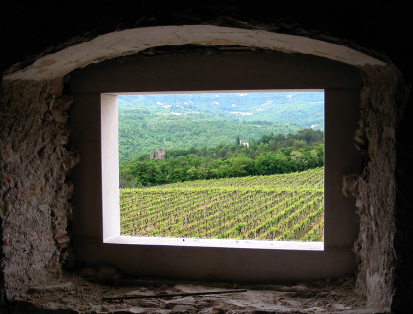 The Belaj complex is a valuable Baroque building consisting of a residential area of the castle, a wine cellar and stables. The ground floor of the Castle has a chapel of St. Henrik, which is the only chapel in Istria dedicated to him. The Chapel contains the tombstones of Martin Mojsijević from 1492 and Andrija Kršanski from 1500. The tombstones were transferred from the Pavlin Monastery in Kloštar. Martin was the inheritor of Kožljak and a descendant from the patrician family from Senj that were also named Moyses or Moysse. His tombstone is decorated with the family emblem and a Glagolitic and Croatian epitaph. Next to the emblem of the family line of Kršan, there is a Latin epitaph, written in Gothic characters. Next to the tombstones, the Chapel contains a plaque with an inscribed year 1570 and the name of Mesaldo Barbo, the lord of Paz. The function of the stone plaque is not known but since he started the renovation of Paz in the same year, it is supposed that the fragment of the plaque testifies to this fact.
The Belaj complex is a valuable Baroque building consisting of a residential area of the castle, a wine cellar and stables. The ground floor of the Castle has a chapel of St. Henrik, which is the only chapel in Istria dedicated to him. The Chapel contains the tombstones of Martin Mojsijević from 1492 and Andrija Kršanski from 1500. The tombstones were transferred from the Pavlin Monastery in Kloštar. Martin was the inheritor of Kožljak and a descendant from the patrician family from Senj that were also named Moyses or Moysse. His tombstone is decorated with the family emblem and a Glagolitic and Croatian epitaph. Next to the emblem of the family line of Kršan, there is a Latin epitaph, written in Gothic characters. Next to the tombstones, the Chapel contains a plaque with an inscribed year 1570 and the name of Mesaldo Barbo, the lord of Paz. The function of the stone plaque is not known but since he started the renovation of Paz in the same year, it is supposed that the fragment of the plaque testifies to this fact.
https://arhiva.cerovlje.hr/en/mjesni-odbori/paz#sigProIdcf6a98410d









